|
|

|
Porsche, and the Porsche crest are registered trademarks of Dr. Ing. h.c. F. Porsche AG.
This site is not affiliated with Porsche in any way. Its only purpose is to provide an online forum for car enthusiasts. All other trademarks are property of their respective owners. |
|
|
| nihil44 |
 Feb 23 2022, 08:57 PM Feb 23 2022, 08:57 PM
Post
#1
|
|
Member   Group: Members Posts: 157 Joined: 28-January 12 From: Brisbane, Australia Member No.: 14,058 Region Association: None 
|
I have bragged to my carburettored friends about how the '74 1.8 L Jet starts off the key even after a lay off of a month or so. Lately it has required two cranks to start. I suspected a vacuum leak as I pulled a plug and the pluf looks like the mixture is lean but the exhaust tips are black
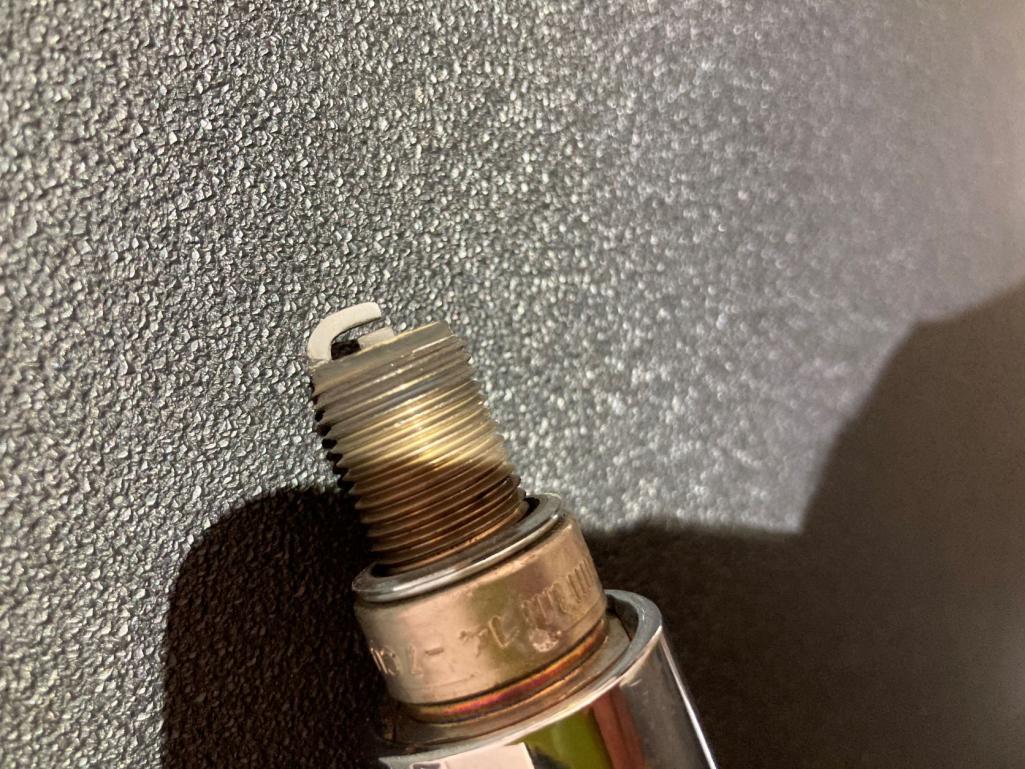 I made a smoke maker based on this YouTube site THE BEST SMOKE TESTER YOU CAN BUILD!! / THE MR. FUSION MINI BUILD - YouTube Applied smoke into the intake system and this is what resulted. 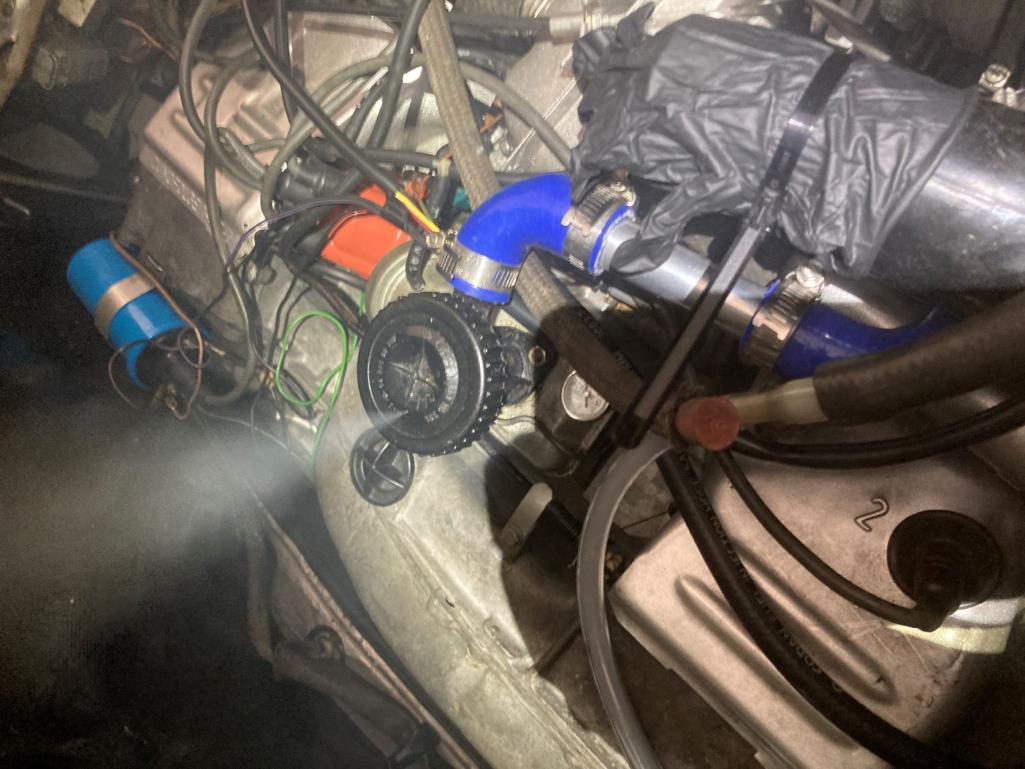 Over the years I have read about ensuring the oil filler cap has a good O ring and cap seal otherwise unmeasured air will enter the intake system downstream from the Air Flow Meter and cause a disturbance in the A/F ratio determined by the ECU. There is a factory hole in the oil filler cap as revealed by the smoke test. I have 2 filler caps and they both have the small hole. How does this work if the L Jet intake system is supposed to be closed? I was expecting the smoke test to reveal a vacuum leak in the intake boot or elsewhere and that would be the 'aha' moment. Not so lucky. However I would like to confirm that the intake system is vacuum leak free. Would appreciate some explanation from the collective brain trust. A word of caution: If doing a smoke test, perform it outside or in a well ventilated garage otherwise it will set off the smoke detectors. How would I know this? David |
  |
Replies(1 - 19)
| wonkipop |
 Feb 24 2022, 12:44 AM Feb 24 2022, 12:44 AM
Post
#2
|
|
Advanced Member     Group: Members Posts: 4,807 Joined: 6-May 20 From: north antarctica Member No.: 24,231 Region Association: NineFourteenerVille 
|
sh$t.
oh no. thats got me beat,.........and interested. like you i assumed after all the written orders over the years re oil cap and gasket its meant to be tight tight tight. (IMG:style_emoticons/default/headbang.gif) |
| wonkipop |
 Feb 24 2022, 12:48 AM Feb 24 2022, 12:48 AM
Post
#3
|
|
Advanced Member     Group: Members Posts: 4,807 Joined: 6-May 20 From: north antarctica Member No.: 24,231 Region Association: NineFourteenerVille 
|
i just went and looked at mine.
same pinprick hole. tiny. never noticed it before or that the oil cap was a teapot. wonder if it only blows one way? i held it up to the sunlight and could not see through it. i'm going to assume mine would do the same if i took it to the cigar bar. re exhaust tips being black. you mean exhaust pipe tips? you might be thinking of the distant past nihil44. unleaded fuel won't give you light coloured exhaust pipe tips. |
| djway |
 Feb 24 2022, 01:35 AM Feb 24 2022, 01:35 AM
Post
#4
|
|
Senior Member    Group: Members Posts: 787 Joined: 16-October 15 From: Riverside Member No.: 19,266 Region Association: Southern California |
When I did my smoke test nothing came out that hole...
|
| wonkipop |
 Feb 24 2022, 02:36 AM Feb 24 2022, 02:36 AM
Post
#5
|
|
Advanced Member     Group: Members Posts: 4,807 Joined: 6-May 20 From: north antarctica Member No.: 24,231 Region Association: NineFourteenerVille 
|
When I did my smoke test nothing came out that hole... two possibilities hole is meant to open. or hole was gunked up? mystery! EDIT there is a thread on the hole in the cap here. a lot of stuff. samba. https://www.thesamba.com/vw/forum/viewtopic...sc&start=20 i have not read it all. you got to sift through it to find the smart cookies. its a bit confusing as they all talk between D jet and L jet. obviously it is a vent though or it would not be there. i took mine off again now that its nightime and shone a torch through it. there is not light shining through the pinhole in mine. does not mean anything. could vent in sideways or through a second layer behind it. |
| wonkipop |
 Feb 24 2022, 05:09 AM Feb 24 2022, 05:09 AM
Post
#6
|
|
Advanced Member     Group: Members Posts: 4,807 Joined: 6-May 20 From: north antarctica Member No.: 24,231 Region Association: NineFourteenerVille 
|
i read that samba thread from end to end.
not that it directly helps much because the L jet on buses or 412s had a different set up for the crank case vent. separate oil filler tube and cap off to the side. but i noticed something - which i have noticed more and more looking for parts etc. VW seemed to assemble a lot of different function components from common sub mouldings. eso. plastic parts. the top section of the oil filler cap on the 1.8 appears to be the same as the top part of the crankcase ventilation cap on similar type 4 bus engines. in that situation it definitely has a pin sized hole right through. underneath it is a membrane set up with a spring. it works like a positive pressure valve. the pin hole seems to be to allow air to escape as the membrane is pushed up by crankcase pressure towards this cap piece. the hole does not have any direct connection to the crankcase or the induction inlet tract. its just to allow the membrane to move upward and then to let air back in as the membrane relaxes. the system on the 914 L jet is nothing like that. we don't have any valve or membrane in there. its just a crankcase vent to the inlet tract. i think there are some kind of baffles to the side in the little rectangular box below the oil fill tube. i don't think ours even has a valve in it down in that box section like the d jet cars. d jet owners would know more about what is in theirs. but i think ours works as a straight vent to the intake air duct. i'm thinking that VW used that standard moulded piece combined with a ring grip section bonded to it to make the oil filler cap on our cars. but plugged the hole which was in the standard casting for the upper top piece? but the plugs might have fallen out of yours or failed? maybe all they did was goop some epoxy in there. i've tried looking at mine from the bottom or the inside and i can't see anything. its not gunked up with oil goo or anything, its pretty clean in there.. and as far as i can tell that hole does not go right through. its sealed i believe. makes sense, because you do not want that hole - it is unmeasured air. its a very small hole for sure but then most of the ones that cause problems are pretty small holes too. thats what i think. others here may know better. that would accord with djway's oil cap smoke test too. |
| Van B |
 Feb 24 2022, 08:40 AM Feb 24 2022, 08:40 AM
Post
#7
|
|
Senior Member    Group: Members Posts: 1,621 Joined: 20-October 21 From: WR, GA Member No.: 26,011 Region Association: None 
|
I think we have a bit of a red herring here. Based on that geyser of smoke, it looks like you're pumping some serious pressure into the crankcase. As such, it will find a way to escape and that pin hole is definitely where it should be escaping. Further, you have the hose that runs from the fill neck to the intake boot, which appears to have Olympic level clamping so, well done on that!
I would set aside the smoke show and go back to the original symptom that prompted your investigation e.g. start-up cranking. Have you checked your points gap and your timing? Second, when cold starting, is your idle sluggish for the first several minutes or does it climb up and then settle as the engine warms up? |
| nihil44 |
 Feb 24 2022, 04:07 PM Feb 24 2022, 04:07 PM
Post
#8
|
|
Member   Group: Members Posts: 157 Joined: 28-January 12 From: Brisbane, Australia Member No.: 14,058 Region Association: None 
|
@wonkipop
Yep. I read the Samba article and it did my head in and am not much wiser. The cap is a little bit of a mystery . I inserted a fine probing wire into the hole and it engaged what seemed to be an annular balloon. Very difficult to see and it may indeed perform some pressure control / gatekeeping function for the crankcase. I will have a look more closely in the next day or so. Laid up at the moment @Van B I will park the smoke show aside for the moment. I was only using a couple of psi for the smoke. The start problem. As described, the car used to start straight off the key even after not having run for a month or two. It always made me feel quite smug. Now - after not running for a few weeks, crank for 4 or 5 secs and no start. Fuel pressure gauge is installed in engine bay and it shows operating pressure after this initial cranking. Crank again and it starts and idles as it would from a warm start and drives perfectly. The cold start injector may be a player here and I haven't performed the test of removing the injector and cranking the engine to see if it is working. It is such a bitch to get to the cold start injector without removing more components than I want to. I will take your advice Van and check the point gap etc Thanks for the help |
| wonkipop |
 Feb 24 2022, 04:47 PM Feb 24 2022, 04:47 PM
Post
#9
|
|
Advanced Member     Group: Members Posts: 4,807 Joined: 6-May 20 From: north antarctica Member No.: 24,231 Region Association: NineFourteenerVille 
|
@nihil44 there are about 5 posts to read in that samba thread.
ignore 75% of them. the type 4 engine running L jet in the bus (and other vws) does have crank-case vent using a valve. the valve is on top of the rectangular baffle chamber just like our oil filler tube. unlike D jet or the bus/kombi pcv valve, we do not have a valve on our L jets. its a straight oil filler tube with the vapor hose out the side. why VW wanted a valve on the kombis i don't know. but they did. that valve closes when the engine is switched off and vapors stay in the crankcase. maybe it had to do with the orientation of all the inlet components in the engine bay. ie oil could condense in the inlet air duct and run down to the AFM unit. i really don't know. for some reason they were confident with no valve in ours and valves in other model type engines. they cobbled together the components for these two different set up using plastic sub components. that much is clear. the central part of the oil filler cap on our cars is the same as the top section of the pcv valve in the type 4 kombi. its a much bigger pcv valve than it is for d jet engines on those kombis. and in there is a membrane valve that works off crankcase pressure pulses. releasing vapors to the intake system for burning during combustion. its pretty simple. the pinhole is necessary to the membrane being able to be pushed up and then return to the closed position at rest and seal off the crankcase from the induction system. the pinhole is not an opening to the atmosphere in the induction system. the pinhole is not a crankcase pressure relief valve, there is a membrane in the way. so in my view that pinhole is not meant to be open in the 914. or in the kombi. and if you can force smoke out of it. - that means in a kombi the membrane has failed - and your pcv valve is kaput. or in a 914 something has given out in the top of the cap that normally seals the hole. |
| wonkipop |
 Feb 24 2022, 05:02 PM Feb 24 2022, 05:02 PM
Post
#10
|
|
Advanced Member     Group: Members Posts: 4,807 Joined: 6-May 20 From: north antarctica Member No.: 24,231 Region Association: NineFourteenerVille 
|
@nihil44
you made me know too much about oil filler caps i did not want to know. another case of just how they made all these different functioning components out of a set of common parts = interchangeable and adaptable. like van says i think even if the pin hole has opened on yours or is closed its a furphy. (did you know furphy is a word invented in australia van?). you could easily tune around an air leak that small when you think about it. you may have forced it open with a lot of pressure. |
| Van B |
 Feb 24 2022, 06:14 PM Feb 24 2022, 06:14 PM
Post
#11
|
|
Senior Member    Group: Members Posts: 1,621 Joined: 20-October 21 From: WR, GA Member No.: 26,011 Region Association: None 
|
Considering I have never heard and am not even sure how to pronounce what you just said, I think it’s safe to say I did not know that lol!
I think another matter to consider is that things do go wrong when not being driven. I would also recommend spending some time in the car and shake out the dust and corrosion that may have set in. Points, plugs, fuel, and so many other things can go bad just by sitting. Maybe by after a run through a tank of petrol, she’ll come back to life? |
| wonkipop |
 Feb 24 2022, 07:01 PM Feb 24 2022, 07:01 PM
Post
#12
|
|
Advanced Member     Group: Members Posts: 4,807 Joined: 6-May 20 From: north antarctica Member No.: 24,231 Region Association: NineFourteenerVille 
|
Considering I have never heard and am not even sure how to pronounce what you just said, I think it’s safe to say I did not know that lol! I think another matter to consider is that things do go wrong when not being driven. I would also recommend spending some time in the car and shake out the dust and corrosion that may have set in. Points, plugs, fuel, and so many other things can go bad just by sitting. Maybe by after a run through a tank of petrol, she’ll come back to life? furphy = red herring. https://en.wikipedia.org/wiki/Furphy |
| Van B |
 Feb 24 2022, 07:15 PM Feb 24 2022, 07:15 PM
Post
#13
|
|
Senior Member    Group: Members Posts: 1,621 Joined: 20-October 21 From: WR, GA Member No.: 26,011 Region Association: None 
|
Massively versatile slang right there!
|
| nihil44 |
 Feb 28 2022, 10:35 PM Feb 28 2022, 10:35 PM
Post
#14
|
|
Member   Group: Members Posts: 157 Joined: 28-January 12 From: Brisbane, Australia Member No.: 14,058 Region Association: None 
|
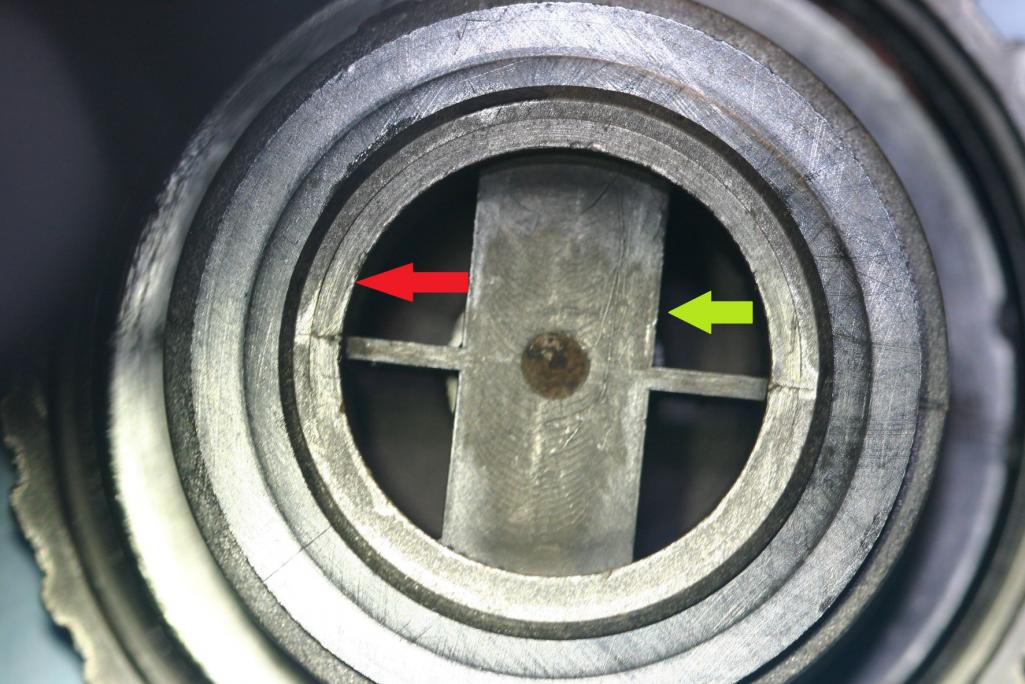 I have been looking a little more closely at the filler cap. Under the centre cross piece (red arrow) I can probe a spring. This spring holds up a diaphragm which appears to have an inflated donut on its periphery (green arrow). I am going by probing as it is impossible to see and photograph these areas. This may be a membrane and not a donut but in either case the purpose of this donut or membrane seems to be to seal off the pin hole in the cap. Why? Dunno. I have run the car with the cap on and have closed the pin hole with my finger at both idle and about 2000 rpm with no effect on the running of the engine in either case. So, I guess if it is not affecting performance then I will leave well alone and turn my attention to other things. Mystery unsolved |
| Van B |
 Feb 28 2022, 10:57 PM Feb 28 2022, 10:57 PM
Post
#15
|
|
Senior Member    Group: Members Posts: 1,621 Joined: 20-October 21 From: WR, GA Member No.: 26,011 Region Association: None 
|
It was gnawing at you eh? Well that pin hole is there to vent excess crank case pressure. Have you been driving the car much?
|
| nihil44 |
 Mar 1 2022, 01:36 AM Mar 1 2022, 01:36 AM
Post
#16
|
|
Member   Group: Members Posts: 157 Joined: 28-January 12 From: Brisbane, Australia Member No.: 14,058 Region Association: None 
|
Van,
Haven't been driving the car much. Biblical rain and floods in our area at present so 914 stays inside. I thought the pin hole vent would work the other way - ie crankcase pressure would keep it closed. Positive pressure would force the membrane over the pinhole to close it off. The spring would keep it closed and negative crankcase pressure would cause a pressure differential to force open the diaphragm and allow ingress of atmospheric air. Probably southern hemisphere physics! |
| wonkipop |
 Mar 1 2022, 02:18 AM Mar 1 2022, 02:18 AM
Post
#17
|
|
Advanced Member     Group: Members Posts: 4,807 Joined: 6-May 20 From: north antarctica Member No.: 24,231 Region Association: NineFourteenerVille 
|
Van, Haven't been driving the car much. Biblical rain and floods in our area at present so 914 stays inside. I thought the pin hole vent would work the other way - ie crankcase pressure would keep it closed. Positive pressure would force the membrane over the pinhole to close it off. The spring would keep it closed and negative crankcase pressure would cause a pressure differential to force open the diaphragm and allow ingress of atmospheric air. Probably southern hemisphere physics! you might be on to something nihil44. its a boxer engine. ?????? nice work sticking your microscope into the world of L jet esoterica. someone was on here posting a while back that leaky valve covers don't matter for 1.8s. sure thing?! stay dry mate. that seems to be the mother of all rain bombs up your way. i hope you live on one of those nice steep hills in brisbane. (IMG:style_emoticons/default/beerchug.gif) |
| Van B |
 Mar 1 2022, 08:07 AM Mar 1 2022, 08:07 AM
Post
#18
|
|
Senior Member    Group: Members Posts: 1,621 Joined: 20-October 21 From: WR, GA Member No.: 26,011 Region Association: None 
|
Van, Haven't been driving the car much. Biblical rain and floods in our area at present so 914 stays inside. I thought the pin hole vent would work the other way - ie crankcase pressure would keep it closed. Positive pressure would force the membrane over the pinhole to close it off. The spring would keep it closed and negative crankcase pressure would cause a pressure differential to force open the diaphragm and allow ingress of atmospheric air. Probably southern hemisphere physics! Perhaps, I made my assertion based on observation. I only feel air coming out of mine when the engine is cold. As the cylinders warm up, the air out of the oil cap stops. Thus, my conclusion that cold engine blow-by was creating positive crankcase pressure that needed to be vented. Maybe this is something worth testing in the absence of an expert to explain? Should be easy enough to make a test rig. Edit: I still say that before you start trying to diagnose potential problems, the car needs to be driven regularly to make sure your issues are not prolonged storage related issues. No car can survive storage. |
| wonkipop |
 Mar 1 2022, 04:51 PM Mar 1 2022, 04:51 PM
Post
#19
|
|
Advanced Member     Group: Members Posts: 4,807 Joined: 6-May 20 From: north antarctica Member No.: 24,231 Region Association: NineFourteenerVille 
|
@nihil44
looking close at photo you posted of interior of underside of filler cap and taking another look at mine this morning, i reckon the top of the cap is this. see photo. (but it doesn't have the big spring like the VW ones). 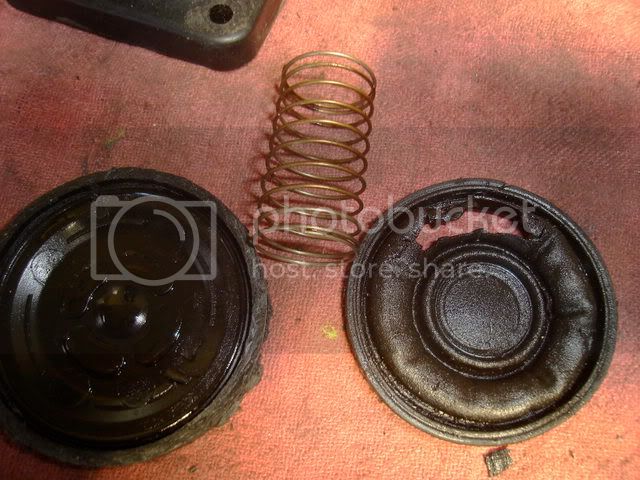 image courtesy of thesamba website. ---- i believe the centre of the screw down oil cap in the 914 engine uses this standard part. there is a membrane and i think its bonded to this plastic piece which forms the central section of the filler cap. if its not bonded its fitted in tightly. photo of standard vw central cap piece. 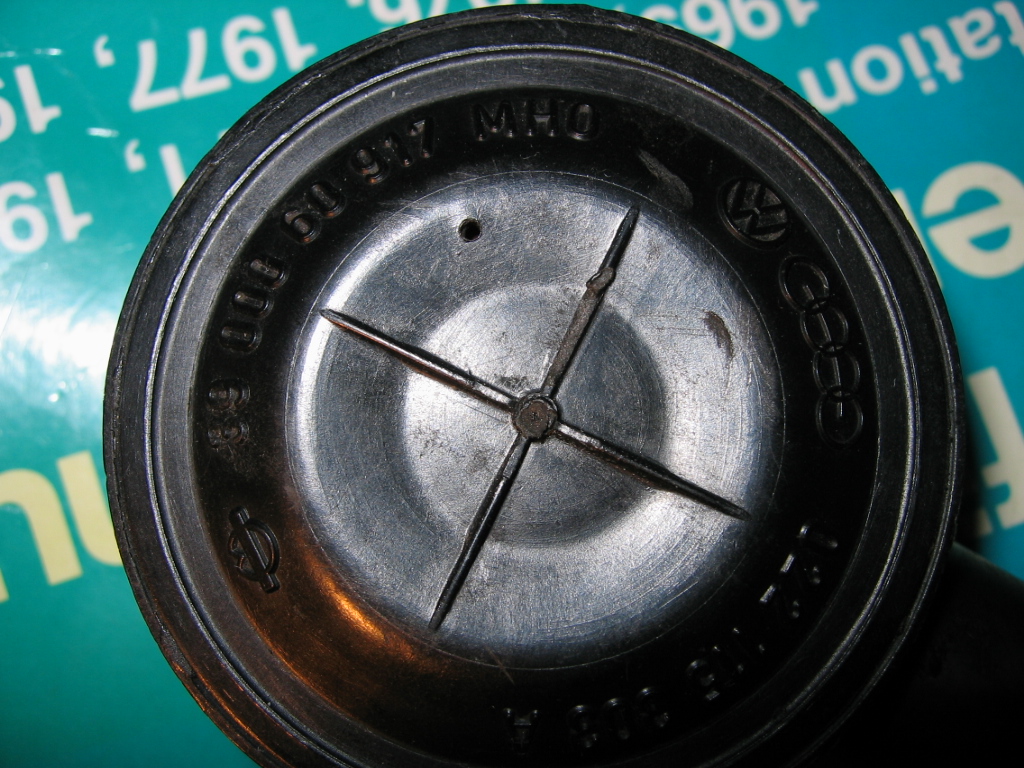 i understand this membrane is a flexible valve that allows pulses of fumes to be released from the crankcase into the inlet system. its used on bus L jet engines and was used on the 412 L jet engine too. here is a photo of a 412 L jet engine. 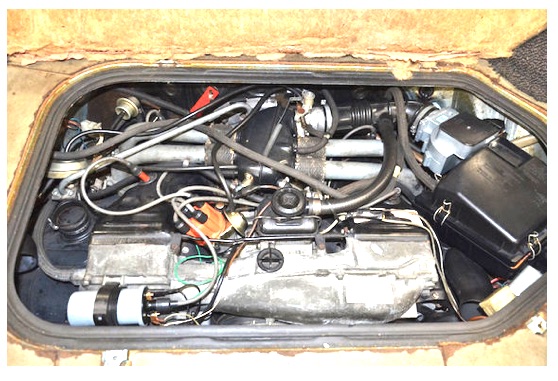 there is no oil filler in those engines. instead the dipstick and oil filler are elsewhere. ------ i don't know enough to tell you exactly how they work precisely in the VW applications. but i believe its pulsed release of crank case fumes into the inlet system for burning. but it might also be designed in those engines not to open at idle and only open at higher revs in addition. dunno. main point is its not open to atmosphere. the pin hole just lets the membrane operate at atmospheric pressure on one side. so it can flex up and down over the top of the crankcase vent tube coming up through the baffle box. i think ours are the same. there is no opening to the atmosphere. but in ours the membrane is rendered inoperative. no pulsed release of crank case fumes to inlet system. our crankcase vent tube is open to inlet system all the time and the cap is sitting up at top of oil filler tube well above the hose outlet to the inlet manifold. all it does is seal the cap and its pinhole. they could have made a separate stand alone part. but they didn't. maybe because they made 10 million VW versions of the engine and only several thousand 914 versions? so it made sense to do an adaption of pre made elements to build up the part. as far as i can tell the oil filler tube and fill cap is only on these 914 engines. but i don't really know much about the millions of VW fuel injected engines that floated around the USA in the early 70s. the failure mode for the VW part is just what your smoke test showed. fumes out of the pinhole. - the fix for failure of this membrane in the VW engines is to take it out and replace with a rigid circular steel plate. this converts the valve into a permanently open to the inlet system crankcase vent like our cars have. this also seals off the pin hole to the atmosphere which would normally be sealed by an uncompromised membrane. i would say the pinhole is never meant to be open to the crankcase. doesn't mean i am right though. i didn't really even know L jet had a totally different pcv valve set up to D jet engines until a couple of years ago. not something i took much notice of until recently. ---- i guess there is always the chance its meant to rupture in case of excessive crankcase pressure. like a fail safe one time valve. but i doubt it. its a pretty small hole. i would have thought given the way it all is just big bore hoses into the inlet system, such pressure - whether negative or positive would tend to equalise up through the AFM via idle air passage? there is no valve anywhere in the crankcase vent as far as i can tell in a L jet 914. its just open from crankcase to combustion air inlet. ???? |
| wonkipop |
 Mar 1 2022, 05:34 PM Mar 1 2022, 05:34 PM
Post
#20
|
|
Advanced Member     Group: Members Posts: 4,807 Joined: 6-May 20 From: north antarctica Member No.: 24,231 Region Association: NineFourteenerVille 
|
@nihil44
i am looking at our cap and oil filler real close now. and i'm wondering if its not pulsed in some way too. just like the VW engines. can't quite figure it out yet. but the whole cap sits down into one ledge and the breather hose joins above that. more later if i can find something further on this. need a cross section drawing. point would be, if it is a pulsed valve incorporated into a screw down oil cap then if its blowing smoke out its failed. this would kind of make sense. the buses and the 412s had a separate oil filler cap and dipstick outside car for convenience. so its just a pure pulsed crankcase valve on top. but we have the oil filler cap and dipstick on top of engine. is it a pulsed valve and screw on cap combined into one? just can't quite fathom how it works looking at it just yet. i can understand how the VW one works. but not this one yet. |
  |
1 User(s) are reading this topic (1 Guests and 0 Anonymous Users)
0 Members:

|
Lo-Fi Version | Time is now: 4th July 2025 - 03:18 AM |
Invision Power Board
v9.1.4 © 2025 IPS, Inc.








